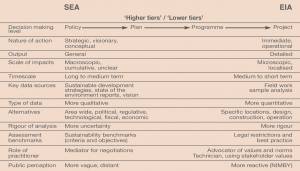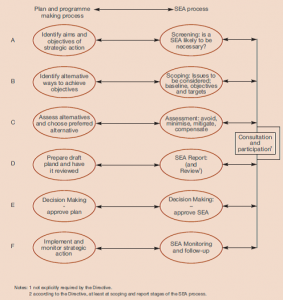Lesson 10 – PROSPECTS: Strategic enviromental assesment
Welcome to the lesson on Strategic Environmental Assessment (SEA). In this course, you will learn about the hierarchy of levels in decision-making, how policies shape subsequent plans, programs, and projects, and the nature of decision-making changes from policies to projects. You will also learn about the limitations of the Environmental Impact Assessment (EIA), a proven tool over the past 35 years, and how it is carried out for specific development projects but lacks a strategic vision and spatial scope that could allow for the consideration of the cumulative impacts of multiple projects in an area.
The weaknesses in the EIA concept led to the need for a more strategic approach to the environmental assessment that can be incorporated into policy, planning, and programming levels, allowing for a proactive process that will integrate the concept of sustainability much better than the EIA. This process has become known as the Strategic Environmental Assessment (SEA).


The SEA addresses the environmental implications of decisions made on a broader, more strategic level and endorses the application of a systematic, proactive, EIA-based, and participative process. The SEA can also help to promote sustainable development by broadening the scope of assessment to also consider social and economic issues and potentially setting sustainability objectives.
In this course, you will learn about the similarities and differences between the EIA and SEA, the characteristics of both assessments and how the work carried out under the SEA can be used for the EIA, as it follows a continuous and integrated decision flow.
The environmental benefits to be derived from SEA are much higher than that from EIA, and this course will help you understand why and how to incorporate SEA into your environmental assessments. By the end of this course, you will have a better understanding of the importance of SEA, how it can be used to promote sustainable development, and how it can be incorporated into policy, planning, and programming levels.